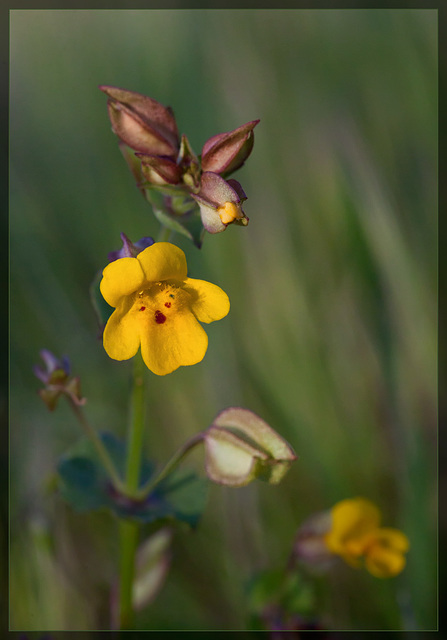Details, Details
Turkey Vultures Flying Free
Bi-Colored Flaxflower: The 51st Flower of Spring!
Hiding
Pink Steelstem Vinola: the 52nd Flower of Spring!…
Monster Mushroom!
Ms. Beefcake
Star of Bethlehem Lily: The 52nd Flower of Spring!
Changing Forget-Me-Not: The 53rd Flower of Spring!
Our Friend, The Silkworm Moth
Giant Silkworm Moth Front View
Our Own Mothra, the Giant Silkworm Moth!
Enchanting Mushroom
Common Brodiaea: The 54th Flower of Spring!
I See Me
Common Ringlet Butterfly on Seablush
Tendrils
Western Wild Cucumber: The 55th Flower of Spring &…
Western Wild Cucumber Vine
Burr Chervil: the 56th Flower of Spring & Summer!
Olé!
Buckbrush: The 57th Flower of Spring & Summer!
Cycle of Life: Garter Snake vs. Bluebelly Lizard
I'm A Star!!
A Trio of Tiny Beauties: Nutall's Toothwort Blosso…
Lovely Little Weed: the Cut-Leaved Geranium Blosso…
Swamp Onion: The 49th Flower of Spring!
Narrow-Leaved Montia: The 48th Flower of Spring!
Do Not Touch These Beautiful Leaves!!
The Awesome Raptor, Meet the Red-Tailed Hawk
Common Vetch: The 47th Flower of Spring!
The Tiny Wolf Spider & The Photoshop Challenge!
Nature's Water Pearls 2
The Breathtaking Bleeding Heart
Many-Flowered Bedstraw: The 46th Flower of Spring!
EEEK!! It's a Tremor's Graboid!!
Small-flowered Tonella: The 45th Flower of Spring!
Lovely Miniature Lupine Blossoms
Pastel Henderson's Shooting Stars
This is My World
Pacific Madrone Buds: 44th Flower of Spring!
Pumpkin's Bright Eye
Pistil Power!
Miniature Lupine: The 43rd Flower of Spring!
Rolled-Up Rusty Popcornflower Stem
Keywords
Authorizations, license
-
Visible by: Everyone -
All rights reserved
-
233 visits
Seepspring Monkeyflower: The 50th Flower of Spring!


[best appreciated at full size against black]
WOO HOO!!! I've reached Number 50!! How many flowers will I find before I'm done? I am going to guess somewhere about 100! Let's find out, shall we? :)
If you've been visiting my photostream for a while, this flower will look familiar to you! The 16th Flower of Spring is the Chickweed Monkeyflower, and if you didn't see them side-by-side, you'd think they might be the same flower. However, this species has flowers that measure about 1" in diameter, and the Chickweed Monkeyflower is only 1/4" in diameter! These two flowers grow in the same place, but as the Chickweed Monkeyflowers are dying away, the Seepsprings take over!
The Seepspring Monkeyflower is in the genus "Mimulus," includes about 150 species and can be found world-wide. They get their name from the resemblance of some species to a monkey's face. This species is found in places where the ground is very wet, and are only found here on our property. Rain water runs down off of our hillside, through the meadow and down through the valley below, making this area almost bog-like during sprintime. I was interested to find out that monkeyflowers accumulate salt in their leaves and stems, and were used as a salt substitute to flavor wild game by Native Americans and pioneers. It also has medicinal uses; the juice squeezed from the plant's foliage has been used as a soothing poultice for minor burns and skin irritations.
If you would like to know more about monkeyflowers, Wiki has a great source of information here: Wiki: Monkyeflower (Mimulus).
This image was taken in April, 2012.
WOO HOO!!! I've reached Number 50!! How many flowers will I find before I'm done? I am going to guess somewhere about 100! Let's find out, shall we? :)
If you've been visiting my photostream for a while, this flower will look familiar to you! The 16th Flower of Spring is the Chickweed Monkeyflower, and if you didn't see them side-by-side, you'd think they might be the same flower. However, this species has flowers that measure about 1" in diameter, and the Chickweed Monkeyflower is only 1/4" in diameter! These two flowers grow in the same place, but as the Chickweed Monkeyflowers are dying away, the Seepsprings take over!
The Seepspring Monkeyflower is in the genus "Mimulus," includes about 150 species and can be found world-wide. They get their name from the resemblance of some species to a monkey's face. This species is found in places where the ground is very wet, and are only found here on our property. Rain water runs down off of our hillside, through the meadow and down through the valley below, making this area almost bog-like during sprintime. I was interested to find out that monkeyflowers accumulate salt in their leaves and stems, and were used as a salt substitute to flavor wild game by Native Americans and pioneers. It also has medicinal uses; the juice squeezed from the plant's foliage has been used as a soothing poultice for minor burns and skin irritations.
If you would like to know more about monkeyflowers, Wiki has a great source of information here: Wiki: Monkyeflower (Mimulus).
This image was taken in April, 2012.
- Keyboard shortcuts:
Jump to top
RSS feed- Latest comments - Subscribe to the comment feeds of this photo
- ipernity © 2007-2025
- Help & Contact
|
Club news
|
About ipernity
|
History |
ipernity Club & Prices |
Guide of good conduct
Donate | Group guidelines | Privacy policy | Terms of use | Statutes | In memoria -
Facebook
Twitter

Sign-in to write a comment.